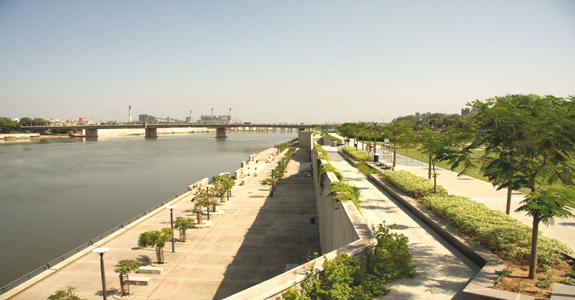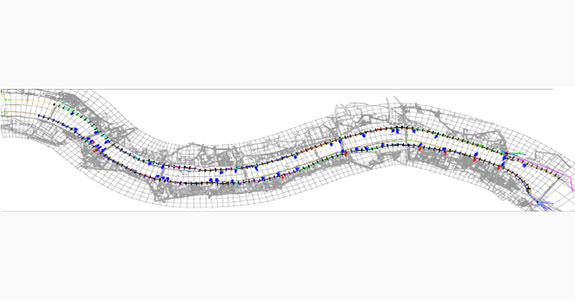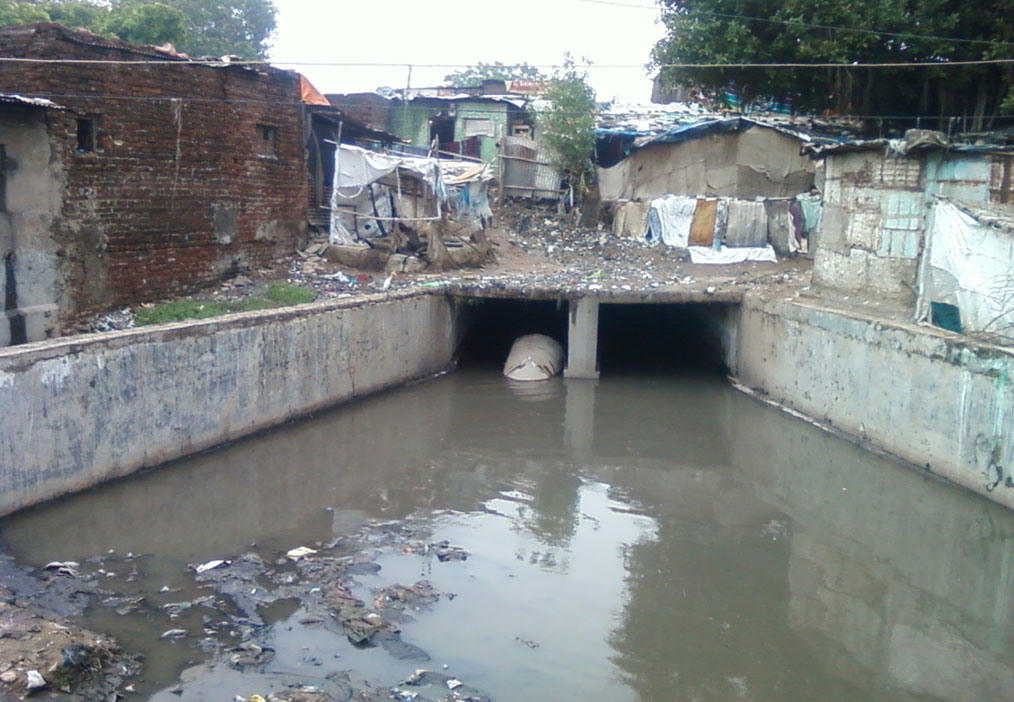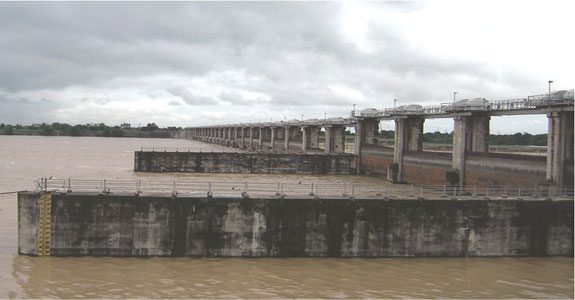


Environmental Improvement
Strategies for overall environmental improvement have been formulated to achieve the following objectives :-
Reduction in Erosion and Flood
Strategies for flood protection, bank protection, and river training have been formulated based on detailed hydrological and hydraulic analysis and an optimal width of 263 meters for the water way has been selected.
Strategies for flood protection, bank protection, and river training have been formulated based on detailed hydrological and hydraulic analysis. An optimal width of 263 meters for the water way has been selected and implemented. Both banks of the river have diaphragm walls built into the riverbed at a depth of more than 10m, and retaining walls which protect low-lying areas from periodic flooding and prevent erosion of the river banks. The Sabarmati has been channelized to a constant width without altering the flood carrying capacity of the river. Now the project can sustain flood levels of 4.75 lac cusecs without spillage into the city.



Sewage Diversion
To stop the pollution of the river from untreated sewage and industrial effluents, an integrated storm water and sewage system with interceptor sewers has been implemented.
To stop the pollution of the river from the stormwater outfalls and industrial effluents, an integrated storm water and sewage system with interceptor sewers has been implemented. These interceptor lines have been installed along both banks of the river capturing 38 sewage discharge points and routing the sewage with new pumping stations in the reclaimed banks. These lines carry untreated sewage to the recently augmented sewage treatment plants south of Vasna Barrage.
Water Retention and Recharge
As Sabarmati is not a perennial river, a comprehensive strategy to manage and maintain water in the river throughout the year has been worked out. Water retention in the river shall enable recreational activities as well as recharge the groundwater.
As Sabarmati is not a perennial river, a comprehensive strategy to manage and maintain water throughout the year in the river has been worked out.
The Vasna Barrage, located just downstream of Ahmedabad, makes it possible to retain water for 15 kilometers upstream, the entire length of the river within the city. The Narmada Canal, which crosses the river a few kilometres upstream from the city, makes it possible to replenish the barrage-retained water that is used up for irrigation or is lost to evaporation and seepage.

A more sustainable alternative is undergoing planning to use treated water from the sewage treatment plants to replenish the river. Hence, the traditionally monsoon-fed Sabarmati shall be able to hold and replenish water year-round. Water retention in the river enables recreational activities as well as groundwater recharge.
River Cleaning
The Riverfront has adopted the process of cleaning the River by using Floating Trash Skimmer Machine. The Skimmer Machine is able to gather the waste that is floating and is on shallow depths. Today, the River has been cleaned and the ecosystem has plunged back to greenery and varied species of migratory birds.
SRFDCL is testing the quality of water and the level of oxygen in the water to improve the marine Biodiversity. The substantial level of Dissolved Oxygen is maintained in the water.